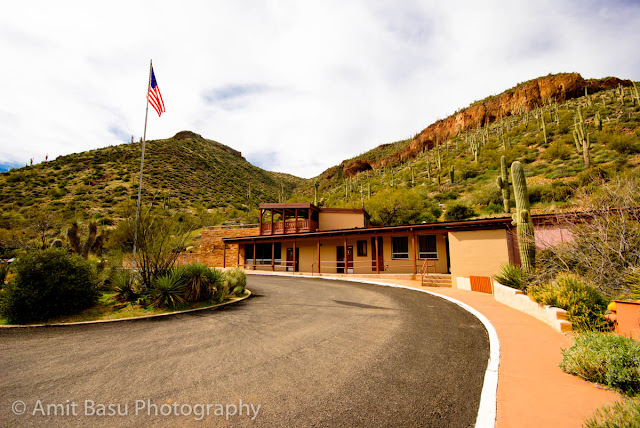Arizona - Going Back in Time in Tonto National Monument
When we arrived at Tonto National Monument, tucked far away from Phoenix in a bowl of red rocks and clay, the sun was high up in the sky. It was nice and mild though, with cool air blowing, befitting the early spring atmosphere. We were on the Apache Trail, a route that goes around, and sometimes, through, the Superstition Mountains to the east of Phoenix. Its wild, rugged country, desert-like, and largely empty; stone's throw away from some Indian reservations.
So, there we were, having driven the Apache Trail halfway around the Superstition mountains, making it a day with no specific agenda, but only to see what Arizona has to bring. The Apache Trail is, to put it using cliched words, simply beautiful. It goes through mountain passes, and continuously changing landscape.

Tonto National Monument preserves old Salado Indian dwellings, dating back some seven hundred years. Its on the mountain side right by the Roosevelt Lake, a rather large water body, created by damming the Salt River with Roosevelt Dam, the largest masonry dam in America. Even before the dam, when this area was populated by the Indians, the Salt River provided the much needed life-giving water. It appears to have sustained a few thousand Salado Indians in its heyday. Then, from what is known, around 1450 there was a catastrophic flood which prompted a migration of the Salados away from the Tonto Basin area. Today, down on the Tonto Basin, is the small village of Roosevelt, occupied by those who came after. From the highway, the village looked rather nondescript, a collection of mobile homes or some such; so we decided to skip it.
There are two sets of Indian dwellings in Tonto National Monument: the lower and the upper. You can only get to the upper dwellings as part of a tour that starts at 10 in the morning. So we got to hike up to the lower dwellings, a nice short hike of half a mile, gaining some 300 feet in the process. The dwellings are in a large recess on the side of the mountain. They are largely broken, plundered and defaced by those who arrived after the Indians have left. These people left their mark everywhere, inscribing their names on the wooden poles. Tonto dwellings were incorporated into National Monument only in 1916; by then, a lot of damage has already been done.




We spent a long time among the ruins, trying to imagine what it must have been those hundreds of years ago, looking down out of the window of these beautiful dwellings. The view from there was splendid, with tall mountains with Saguaros all around, and the lake in the distance. I could have stayed there forever.
But the Apache Trail beckons. As Tonto slowly moved farther away in my rear-view mirror, I felt closer to those people from thousand years ago, whom I have never seen, but I know that they lived a simple life, close to nature, and in harmony with it.
And we, the people from a thousand year later, have chosen a very different path.





Comments